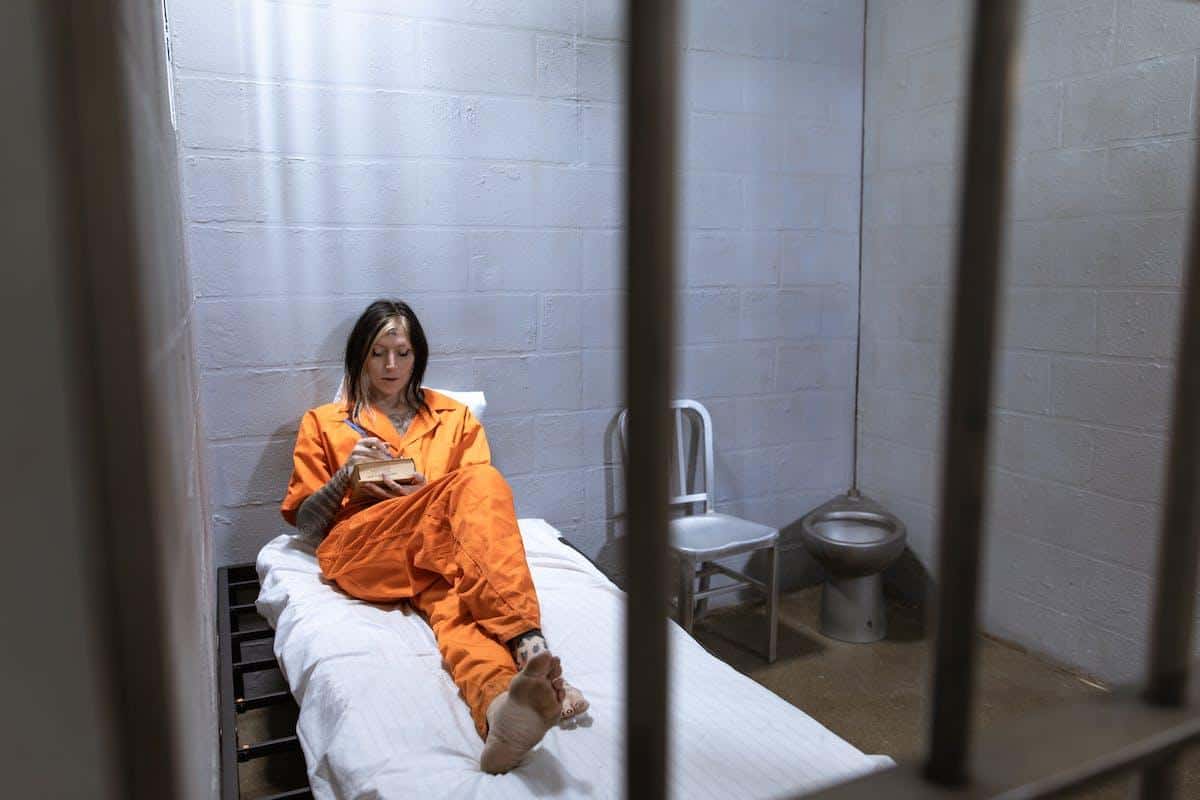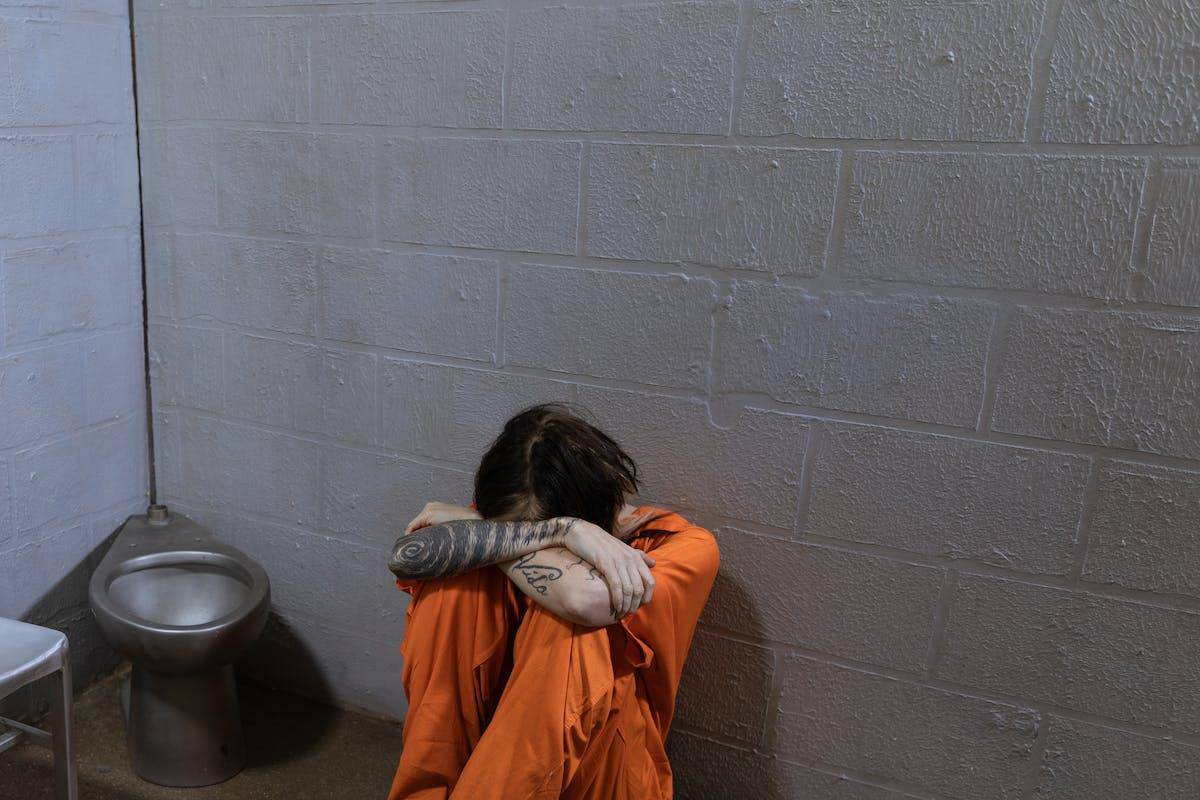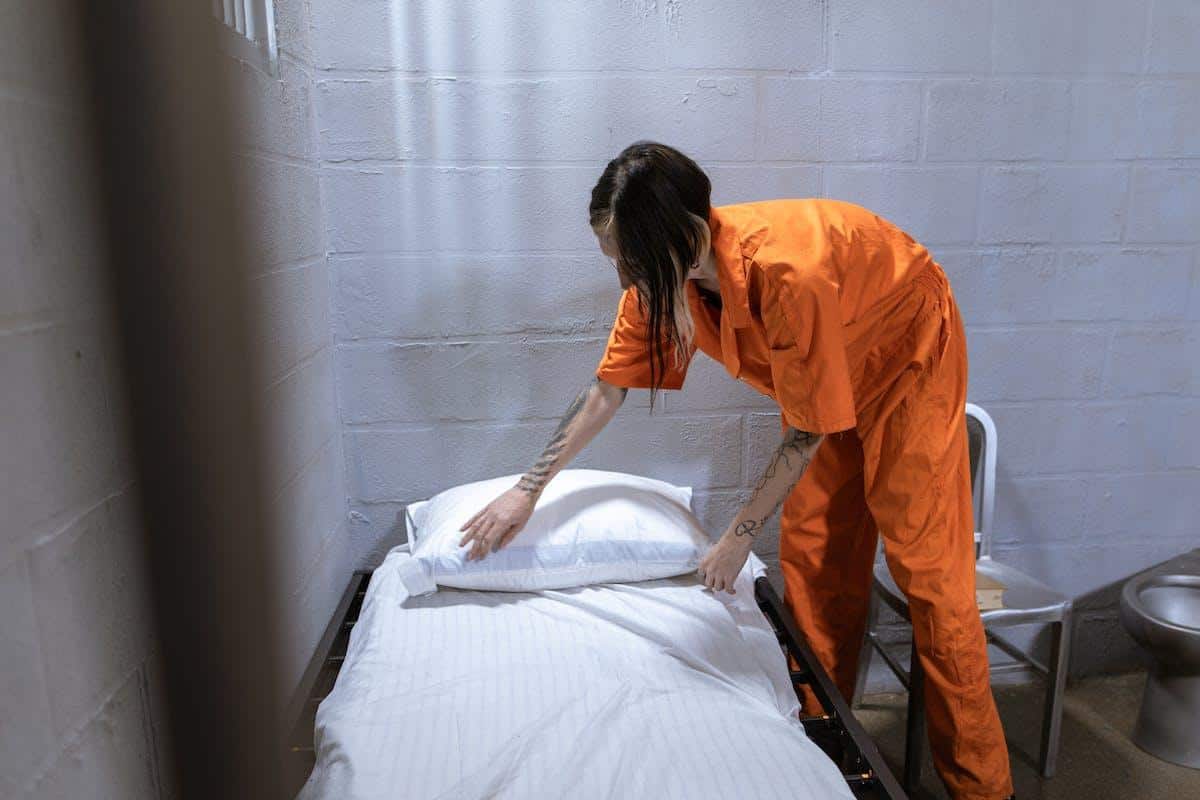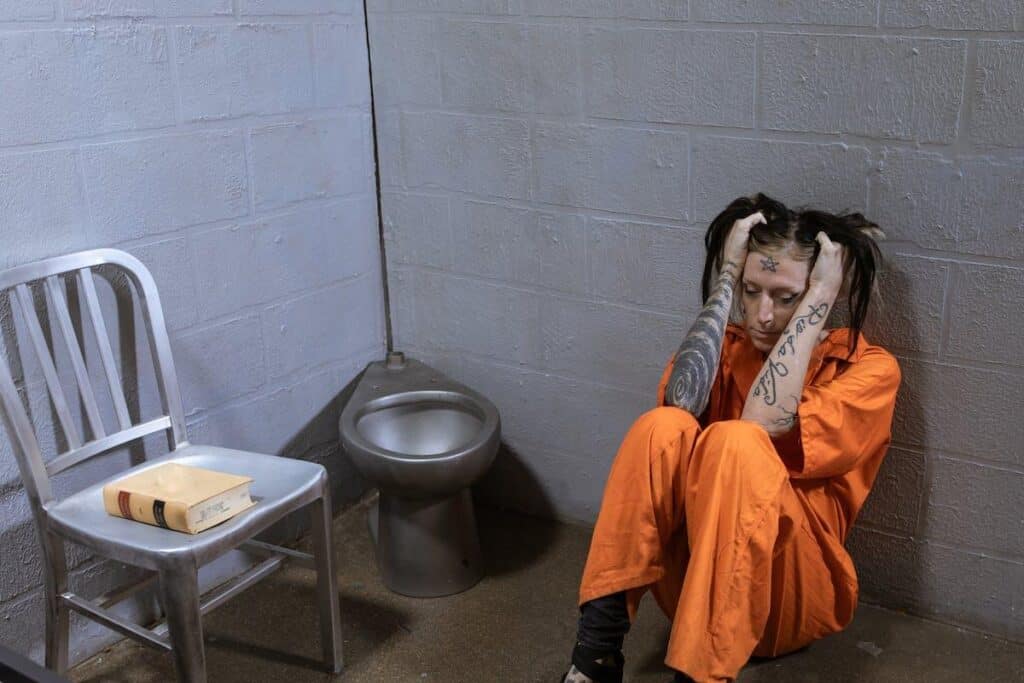Prisoner classification in Orange County, CA represents a fundamental shift in the United States’ approach to prisoner rehabilitation. The evolution of prisoner management has witnessed multiple changes over the years, with recent innovations fostering more than just punitive measures. Understanding this path of progress provides context for the monumental shift that is taking place within Orange County’s prison system.
Initially, U.S incarceration methods heavily relied on categorical punishment without consideration of individual prisoner’s contexts. Over decades, these one-size-fits-all approaches were repeatedly proven ineffective as generic programs did not address peculiarities unique to each offender and resulted in high recidivism rates. Consequently, a need arose for targeted efforts that consider individual characteristics to increase the success rate of rehabilitation initiatives.
In response to these challenges, authorities began experimenting with different models of prisoner management. Of note was the introduction of the prisoner classification system-a method aimed at categorizing inmates based on specific factors such as crime severity, past criminal history, and behavioral assessment criteria to enable tailored rehabilitation programs.
The purpose and significance of this system underscores its importance in paving the way for successful inmate reformation-an aspect distinctly exemplified by how it’s being implemented in Orange County, CA.
Importance of Prisoner Classification
The concept of prisoner classification has come to play an integral role in successful rehabilitation programs within the prison system. At its core, prisoner classification refers to the process by which prisoners are categorized or classified into various groups, each with distinctive treatment and management strategies based on individual backgrounds and behavioral characteristics. Previously, most rehabilitation programs were generalized, treating all prisoners as if they were similar.
However, not all offenders have the same needs or respond to the same types of interventions. Thus arose the need for more specific approaches that take into account individual needs and rehabilitative capabilities.
By offering a more tailored approach to inmate management, the specificity brought about by prisoner classification is instrumental in ensuring a higher chance of successful rehabilitation. There are a number of factors that are considered when classifying prisoners: type of offense committed, risk level (both in terms of reoffending and institutional security), mental health status, educational background or skills possessed, presence of substance abuse issues as well as previous criminal history. By assessing these variabilities:
- The type of crime informs the severity of punishment and provides insight into potential areas requiring intervention.
- Risk level is used to assess both personal risk (to themselves and other inmates) and societal risk (the likelihood they would reoffend once released).
- Mental health status determines whether any necessary therapeutic interventions should be included in the rehabilitative program.
- Educational background might help identify vocational training opportunities.
- History of substance abuse could indicate a need for targeted programs addressing addiction.
Furthermore, another major advantage lies in resource allocation – personalized programs make optimal use of scarce resources such as counseling time, educational materials or vocational training slots. Prisoner classification lessens guesswork involved not only in creating effective rehabilitative plans but also for assigning appropriate institution or housing within it – reducing conflicts and violence while promoting healthier environments conducive to positive change.
Therefore, moving from a general to a specific system allows for individualized treatment plans that have been shown to be far more effective in preparing inmates to reintegrate into society upon release and reducing recidivism rates, ultimately leading towards not just retribution but true rehabilitation.
Prisoner Classification in Orange County, CA
Orange County, California has taken a revolutionary approach to the traditional method of prisoner classification. This progressive methodology addresses each individual inmate’s unique needs and history, as opposed to grouping individuals solely based on their offenses’ severity.
It is an in-depth approach that takes into account past criminal history, behavioral data during incarceration periods, and risk analysis aspects grounded on psychological evaluation results. To say it is making waves would be an underestimation; this new model of classification is fundamentally changing how rehabilitation is carried out in their prison system.
One essential aspect of the Orange County approach involves analyzing past criminal behavior comprehensively. Officials study the nature and seriousness of previous convictions (if any) and other potential crimes committed but not necessarily resulting in conviction.
Recidivism rates are studied intensively to understand if there are patterns linking certain types of offenders with repeating behaviors, providing valuable insights for adjusting classification protocols accordingly. In particular, offenders who have repeatedly shown serious or violent tendencies might necessitate different types of intervention programming compared to non-violent habitual offenders.
Behavioral assessment within the incarceration period plays a significant role in this innovative approach too. Prison staff track prisoner behavior meticulously concerning compliance with rules, engagement with staff and other inmates, and involvement in programs or work assignments. Notably, this also includes observations from mental health professionals regarding signs of depression or anxiety disorders potentially undermining successful reintegration efforts later on.
| Aspect | Description |
|---|---|
| Past Criminal History | Analysis of previous convictions and crime patterns. |
| Recidivism Rates | Evaluation of repeat offense trends among different prisoner categories. |
| Incarceration Behavior | Monitoring rule compliance, engagement levels and signs of mental health issues during the incarceration period. |
Orange County’s revolutionary approach recognizes that prisoners are not just a collective group categorized by their offenses; they are individuals with specific needs and histories. This realization, combined with an innovative and comprehensive classification system, is ushering in a new era of rehabilitation and potential reintegration success.
The Mechanics of Prisoner Classification in Orange County, CA
In Orange County, California, prisoner classification is a highly detailed and meticulous process that balances numerous factors to ensure each offender receives the most suitable rehabilitation. It is conducted upon arrival at the facility and periodically reassessed throughout an inmate’s incarceration.

Key Factors in Classification
The first crucial aspect of the classification system involves evaluating the severity of crimes committed. This categorization ranges from minor offenses such as petty theft to major ones like homicide or sexual assault. The severity assigned directly impacts the level of security, with high-risk inmates placed under more intense monitoring and containment. Additionally, past criminal history forms another pillar for classification; persistent offenders may require stricter measures compared to first-time criminals to break recurrent problematic patterns.
Behavioral assessment contributes to another approach towards inmate classification in Orange County. Observing an inmate’s behavior during incarceration provides insights into their potential for violence or other risks. This evaluation includes factors such as aggression levels, behavioral changes over time, mental health status, and attitudes towards authority. Based on these combined elements, prisoners are categorized into various classes that dictate their regimen within the correctional facility.
The Process
Once each prisoner has been assessed individually across these parameters, they are then distributed across different housing units with appropriate security levels within the facility according to their specific needs determined by their risk assessment outcomes. This limitation helps avoid grouping together incompatible or potentially dangerous combinations of prisoners and ensuring safer regional management inside the prison walls.
Monitors then track progress on behavioral markers that influence decisions about movement within classes – for instance, showing consistent positive behavior might result in a downgrade on security measures while infractions could mean upgrades on precautions required.
Re-Evaluation and Adjustment
Orange County doesn’t just stop at initial classifications; they believe in periodic re-evaluations of prisoner classifications as individuals can change over time due to experiences or participation in various programs offered within the facility which might reshape their behavior patterns. This flexible approach allows the system to keep up with any alterations in prisoner risk profiles, thereby fine-tuning rehabilitation methods and improving prison management.
The continual arrangement of this classification system in Orange County embodies a dynamic approach that respects and responds to individual differences among prisoners, moving away from a one-size-fits-all approach in favor of tailored intervention strategies. Therefore, it stands as one essential cog in the mechanisms steering towards success in rehabilitation efforts.
Benefits of Prisoner Classification
The Personalized Power of Matching Programs
The benefits of Orange County’s prisoner classification system are considerable, playing a key role in the improved success rate of offender rehabilitation. The primary advantage lies in creating individualized rehabilitation programs. Unlike traditional systems where one-size-fits-all, this revolutionary approach tailors plans to cater to the specific needs and circumstances of each inmate. This degree of personalization allows for greater effectiveness, increased focus, and better utilization of resources.
In essence, the matching process does more than separate prisoners based on their offenses or behavioral patterns; it identifies and addresses the core issues leading to criminal conduct. Whether it’s substance abuse, mental health issues, anger management problems or a lack of education and job skills – appropriate programs can be matched accordingly. For instance, an inmate with a history of drug abuse might be matched with an intensive substance abuse program coupled with group therapy sessions.
Positive Impact on Recidivism Rates
Orange County’s classification system has significantly contributed to lowering recidivism rates – one of its most impressive achievements. By providing tailored support during imprisonment and ensuring that inmates are prepped for reintegration into society upon release through targeted programs such as vocational training or continued education-recidivism is notably reduced.
Essentially, when offenders get the right help aimed at reforming them and not merely punishing them, they are less likely to return to crime once released from prison. According to data from Orange County Corrections Department (OCCD), there has been a marked reduction in reoffensing rates since this innovative prisoner classification system was introduced.
Facilitating Constructive Inmate Interaction
Finally, utilizing a detailed classification system can lead to more constructive interactions among inmates by classifying them according to their behaviors and severity of crimes committed. Mixing together inmates serving time for minor offences with those sentenced for severe crimes may have negative consequences on the former. With a comprehensive classification system in place, inmates are grouped more effectively, fostering safer and more conducive environments for rehabilitation.
Overall, Orange County’s prisoner classification system promotes rehabilitation over punishment, a shift that not only benefits individual inmates but also contributes to safer communities. Implementation of tailored programs addresses varied needs, reduces recidivism rates and facilitates effective interaction within prison walls – a testimony to its effectiveness and potential scalability.
Illustrative Success Stories
Demonstrating the Impact Through Real Experiences
The success that the prisoner classification system in Orange County, CA has been making would remain nebulous without real-life examples. Numerous beneficiaries of this groundbreaking structure have come forward to tell their stories. These narratives present a compelling proof of how classification can play an enormous role in successfully rehabilitating inmates and integrating them back into society.

Following are a few illustrative cases:
- Case 1: John, who was arrested for drug possession multiple times finally managed to break his harmful cycle through Orange County’s individual-specific approach towards rehabilitation. During the classificatory process within the prison, John’s patterns of dependency were identified and treated accordingly. He was guided through specialized therapy sessions and substance abuse programs that particularly addressed his needs.
- Case 2: Emma, previously known for her short temper and involvement in violent crimes became a successful example of changed behavior after her release from prison. The classificatory system underlined her significant need to address anger issues. She participated in various behavioral management courses which she quoted as ‘life-changing’ during one of her interviews post-incarceration.
The Transformation: From Re-Offending to Rehabilitation Success
The above-mentioned cases highlight how accurate identification and appropriate treatment can mitigate re-offending while increasing chances of successful community integration. It is also worth noting that these individuals not only transformed their own lives but also prevented further harm to others by ending their past criminal habits.
An essential factor that can be discerned from these successes is the indispensable role effective classification plays in customization. A person with drug-related issues requires a distinct therapeutic approach compared with someone who struggles with violent tendencies due to anger issues. The Orange County prisoner classification succeeded remarkably well where conventional one-size-fits-all incarceration policies would have failed.
Revamping Lives With Tailored Rehabilitation Programs
Credit must also be given to the rehabilitative programs that have been designed and tailored after meticulous prisoner classification. These specialized programs – by addressing individual weaknesses, teaching beneficial skills, and promoting personal growth – support offenders on their journey towards a progressive path.
Prisoners are provided a chance to learn various trades like carpentry, masonry or cooking which further enhances their employability options upon release. Personal development and cognitive-based therapies are additional aspects of these well-rounded rehabilitation programs.
By ensuring both internal change (behavioral modification) and external opportunities (educational attainment and skill development), Orange County has successfully heralded the new dawn of rehabilitation. The more success stories surface, the clearer it becomes that precise classification is an essential first step in achieving comprehensive prison reform at a meaningful scale.
Challenges & Limitations
While Orange County’s prisoner classification system has certainly shown significant potential in revolutionizing the rehabilitation process, it’s imperative to acknowledge the various challenges and limitations that come along with implementing such a comprehensive approach.
One of the foremost challenges is resource allocation. The classification system requires efficient execution and continuous monitoring, which means allocating more staff and time toward these activities. This can be burdening to prisons already dealing with overcrowded conditions and staff shortages. Furthermore, providing individualized rehabilitation programming based on each prisoner’s specific needs requires considerable investment – from training for staff to equipment for programs.
Another challenge revolves around accurate risk assessment during the initial classification process. There are variables at play that might provide misleading or incomplete information about an incarcerated person’s risk factors. For instance, determining the chance of recidivism relies heavily on previous criminal records.
Yet this data might not reflect an offender’s capacity for change or underestimate those who have previously avoided detection. Consequently, a misclassification could result in either inefficient use of resources for low-risk individuals or inadequate support for high-risk ones.
Finally, there are unavoidable questions regarding inmate-participation compliance and adaptation to this system. Not all prisoners may willingly cooperate with required assessments, programs or sessions involved in their tailor-made rehabilitation strategy.
Moreover, there exists also a need for constant update of inmates’ progress which may take time while adding more complexities due to varying rates of personal development among inmates themselves. Hence, throughout implementation of this innovative approach barriers like resistance to change by some prison populations should be anticipated and strategic response plans should be formulated beforehand.
Future Prospects
The innovative approach to prisoner classification in Orange County, CA certainly has the potential to serve as a trailblazing model for rehabilitation programs nationwide. The system’s efficiency, integration of comprehensive risk-assessment parameters, and its focus on customized rehabilitation give it significant leverage in reforming the trajectory of inmate rehabilitation in United States.
Looking at future prospects, it is plausible for other regions within the United States to adopt and implement similar classification systems inspired by the Orange County model. It involves extensive research and analysis on inmate’s criminal history, crime severity and behavioral characteristics before designing personalized assistance programs aimed at reducing recidivity rates. Expanding such a model throughout various prisons can potentially lead to more targeted interventions thereby enhancing overall correctional efficiency.
Moreover, the potential of machine learning and artificial intelligence in further refining these classification algorithms cannot be dismissed. Technology could enable accurate predictive analytics leading to more precise inmate categorization. This would not only heighten the effectiveness of personalized treatment plans but also streamline administrative functions yielding cost-efficient operations across penitentiaries.
In terms of global impact, this intricate method of prisoner classification can positively affect change in international prison systems that are grappling with overcrowding issues or high reoffending rates. Introducing such a model may help these countries benefit from focused approached towards rehabilitation while simultaneously managing their respective challenges.
| Aspect | Potential Benefit |
|---|---|
| National Implementation | Enhanced overall correctional efficiency and reduced recidivism rates. |
| Integration with Advanced Technologies | Accurate predictive analytics for precise inmate categorization leading to cost-efficient operations. |
| Global Impact | Solution to prison system challenges such as overcrowding, high reoffending rates through a focused approach towards rehabilitation. |
The prisoner classification system in Orange County, CA is undoubtedly reshaping the perspective of inmate rehabilitation programs. Its focus on individualized treatment and potential future collaborations with AI and machine learning signify that this methodology is not just beneficial for the present; it sows seeds for transformational changes in the future of inmate rehabilitative processes.

Conclusion
The prisoner classification system of Orange County, CA opens doors to a future where prison is no longer viewed solely as a place of punishment, but a chance for individual reform and growth. Its innovative approach marks a decisive shift from general incarceration conditions that hardly cater or impact the unique needs of each inmate, toward highly effective, tailored rehabilitation strategies.
By focusing on factors like crime severity, past criminal history and behavioral assessment in generating specific rehabilitation programs, this paradigm-shaping methodology ensures higher rates of success and offers an unprecedented insight into the potential such an approach holds for reducing recidivism while promoting second chances.
Significant challenges are bound to arise when implementing such innovative systems. However, despite these hurdles, it’s paramount to remember that real societal change happens when we’re bold enough to look beyond conventions and ready ourselves for some ‘creative discomfort.’ As Orange County has shown us quite illustratively, this kind of innovation commands dedication and consistent efforts for its worthwhile results: granting convicted individuals genuine opportunities at rebuilding lives while foreseeing safer communities.
With its success stories already multiplying, the prisoner classification system in Orange county stands with great promise for the future landscape of prisoner management – not just within California or the United States but globally.
The focus now should be on fine-tuning aspects of this process based on experience gained through implementation thus far and creating replicable models that can apply across different territories.These advancements carry with them immense potential to rewrite how societies view justice altogether-shifting from punitive action to rehabilitative action.
For communities everywhere, embracing such innovation would pave the way toward unlocking countless personal victories and safety ultimately making safer spaces for all. With continuous support from law enforcement authorities and governments alike – we could be nearing a future where prisons are indeed institutions for reform rather than revenge; hence truly ‘Unlocking Success through Innovative Rehabilitation’.
Frequently Asked Questions
What Are the Levels of Inmate Classification in California?
Inmate classification levels in California are primarily divided into four categories, each representing a varying degree of security risk. Level I is classified as the lowest security level, usually for inmates who pose minimal public risk and comprise those convicted of non-violent crimes. Level II signifies a medium security risk and includes inmates with fewer behavioral issues and shorter sentences.
Level III represents a high-security level designed for inmates demonstrating aggressive behavior or those serving longer sentences. Finally, Level IV designates the maximum-security level often allocated to inmates convicted of violent crimes and posing significant public danger.
What Are the Four Levels of Classification for Prisons?
The four levels of classification for prisons vary by system but generally include minimum, medium, maximum, and supermax levels. Minimum security facilities are designated for non-violent offenders with lower sentence lengths; these institutions typically house white-collar criminals who pose little threat to society. Medium-security facilities involve stronger exterior boundaries and increased internal control compared to minimum-security outfits, housing inmates with moderate risk profiles who comply with institutional regulations rather notoriously.
Maximum-security prisons are designed to house violent offenders with lengthy or life sentences, providing stringent supervision over inmate activities at all times. A supermax prison functions as a separate unit within maximum security departments designed specifically for insanely high-risk inmates who need further restrictive measures to maintain safety.
What Are the Levels as a Prisoner?
The levels assigned to a prisoner refer essentially to the required amount of custody over them based on the type of crime they committed, their behavior inside prison walls, and their potential danger posed towards society if unenclosed externally or internally in a secured environment leading up surmiseably from low custody which refers to least-dangerous inmates to close custody relating bothersome non-compliant determined misfits judiciary-wise.
How Do I Check the Status of an Inmate in Orange County?
To check the status of an inmate in Orange County online resources can be used such as the Inmate Locator feature available on the Orange County Sheriff’s Department website that requires various fields including first name,last name,middle name,date of birth etc inclusive.
After filling in the necessary details about the inmate, one can find information like bail amount, release date, charges filed,and court dates etc.The Orange County Clerk of Courts is another resource for accessing legal documents relevant to an inmate’s case.
What Is a Level 4 Inmate in California?
In California, a Level 4 inmate denotes an individual housed in a maximum-security area because they pose a significant security risk. This classification usually encompasses inmates convicted with serious and violent offenses that reserve extensive sentences, those exhibiting combative behavior, or ones possessing notoriously unrigged past probational litigations towards safety compliance lawwise.
What Is the Highest Level of Inmate?
The highest level of inmate is typically classified as “supermax,” synonymous with administrative maximum. This classification harbors the most dangerous criminals who pose high-risk threats to public safety and order such as murderers, serial criminal agents or high-profile criminals whose custody loss may spur societal unrest significantly.
What Does B Block Mean in Jail?
B Block in jail typically refers to a designated housing region within the facility wherein inmates’ cells are arranged upto letter named ‘blocks.’ Thus these blocks such as A Block,B Block or C Block refer to distinct rectangular divisions used conventionally for spatial planning within correctional facilities bibbing on easeful management catering sake.
What Does AOJ Mean in Jail?
AOJ in jail commonly signifies “awards of jail” which is a term used to refer to credits earned by inmates towards their sentences for good behavior or participation in work/educational programs while confined-side running allusioned often under state regulations pertaining overall correctional appreciably measures.
